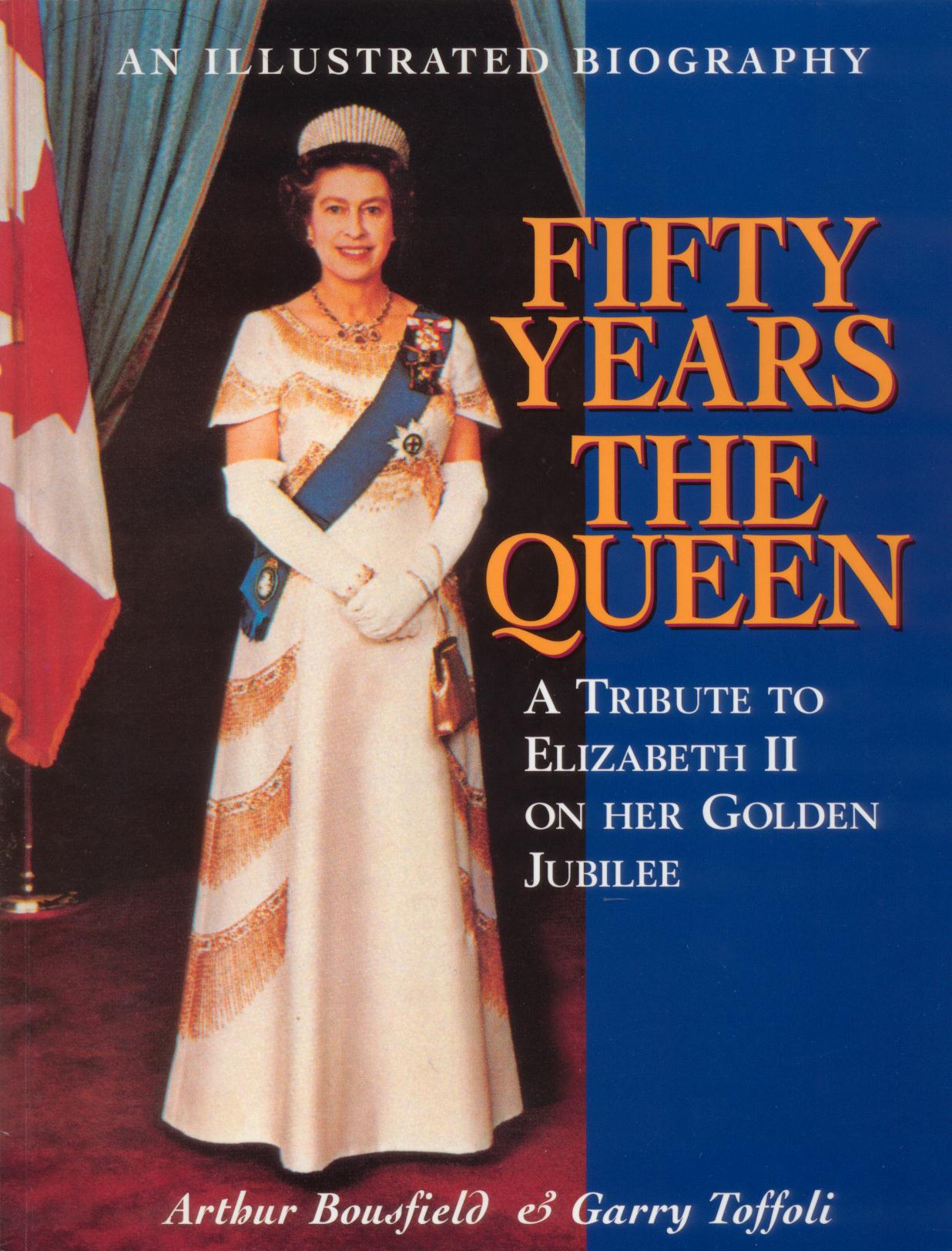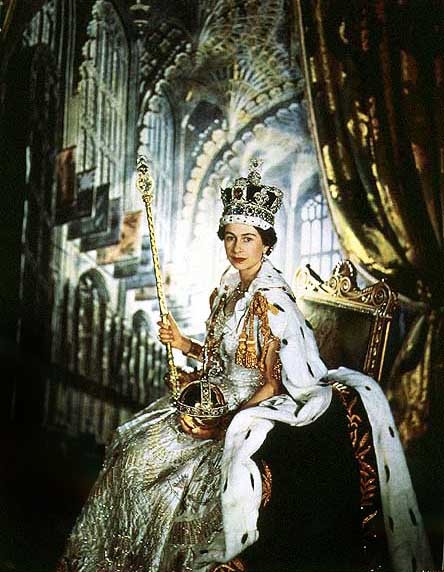
Monarchy
New Zealand
The Journal of The Monarchist League of New Zealand Incorporated
ISSN 1174-8435


Volume 8 Issue 1 February 2003

The Monarchist League of
New Zealand, Inc.
Patron: Hon Sir Peter Tapsell, KNZM MBE MBChB FRCSEd FRCS
The Secretary, 72F Ladies Mile, Remuera,
Auckland 1005, New Zealand
Website URL: http://www.geocities.com/Capitolhill/Parliament/7802
Council:
Chairman: Noel Cox, Esq., LLM(Hons) PhD GradDipTertTchg AdvCertHeraldrySociety CertTertTchg HonCIL FCIL FFASL FBS
Vice-Chairman: Merv Tilsley, Esq.
Secretary: Chris Barradale, Esq.
Treasurer: Stephen Brewster, Esq., MBA BCA CA
Councillors:
Nicholas Albrecht, Esq., MA(Hons)
Roger Barnes, Esq., FHSNZ
John Cox, Esq, LLB MNZTA
Neville Johnson, Esq.
Ian Madden, Esq., MA LLB FSA(Scot)
Robert Mann, Esq., MSc PhD
Professor Peter Spiller, BA LLB PhD LLM MPhil PhD AAMINZ
League Officers:
Legal Adviser: Noel Cox, Esq., LLM(Hons) PhD GradDipTertTchg AdvCertHeraldrySociety CertTertTchg HonCIL FCIL FFASL FBS
Librarian and Archivist: Noel Cox, Esq., LLM(Hons) PhD GradDipTertTchg AdvCertHeraldrySociety CertTertTchg HonCIL FCIL FFASL FBS
Provincial Representative, Wellington: Mathew Norman, Esq., BA
Provincial Representative, Manawatu-Horowhenua: Kevin Couling de St Sauveur, Esq.
Editor, Monarchy New Zealand: Noel Cox, Esq., LLM(Hons) PhD GradDipTertTchg AdvCertHeraldrySociety CertTertTchg HonCIL FCIL FFASL FBS
Assistant Editor and Advertising Manager, Monarchy New Zealand: John Cox, Esq., LLB MNZTA
Honorary Chaplain: Revd Gerald Hadlow, LTh
Webmaster: Noel Cox, Esq., LLM(Hons) PhD GradDipTertTchg AdvCertHeraldrySociety CertTertTchg HonCIL FCIL FFASL FBS
Monarchy New Zealand is published by The Monarchist League of New Zealand Inc. Opinions expressed do not necessarily reflect the policy of The Monarchist League of New Zealand. Correspondence should be addressed to the Editor, Monarchy New Zealand, 123 Stanley Road, Glenfield, Auckland 1310, New Zealand. Tel: +64 9 444-7687; Fax: +64 9 444-7397; E-mail: [email protected]
Editorial
I was surprised, and I have to say horrified, to read in the August 2002 Crown Law Office briefing to the Attorney-General that the Cabinet had decided on the 18th March and the 13th June 2002 that the title of Queen’s Counsel (QC) will be replaced by "Senior Counsel" (SC), although existing Queen’s Counsel will have the option to retain their title.
Newly renamed SC's will continue to be appointed by the Governor-General on the recommendation of the Attorney-General, with the concurrence of the Chief Justice. A new advisory panel may be convened to advise the Attorney-General.
There was nothing reported in the news media about this change. Indeed, there was no press release, or other public announcement. Doubtless the Government didn’t want to invite criticism in the lead-up to an election. For there can be no justification for the change. The sole reason is that the Cabinet is dominated by republicans, who wish to remove all connections or references to the monarchy.
The Governments of a number of Australian states have ceased to recommend the appointment of Queen’s Counsel since the 1990s. The motivation for such moves was clearly the republicanism of the then state Governments – though the high level of fees paid to QCs was also given as a factor.
However, legal practitioners recognise the need for some means of identifying senior counsel. As a consequence, the New South Wales Bar has invented the grade of Senior Counsel ("SC") to fill the gap left by the abandonment of the status of QC. Since these are appointed by the Bar Association rather than by the state government there was no question of them being styled "Queen’s Counsel". There is no evidence that the fees of senior counsel are any lower than that of Queen’s Counsel.
In the New Zealand proposal the office of QC remains – it is simply renamed.
We can expect to hear more when the Law Practitioners and Conveyancers Bill is introduced, possibly this year – though it is already long delayed. Queen’s Counsel are presently appointed pursuant to section 62 of the Law Practitioners Act 1982, and this provision would require amendment if the change is to be implemented.
I trust that there will be concerted opposition to this change in nomenclature. It cannot possibly have any motivation except republicanism, and therefore should be condemned.
Dr Noel Cox
Editor
News in Brief
The Queen’s Christmas Broadcast
The following is the full text of Her Majesty The Queen’s 2002 Christmas Broadcast to the Commonwealth:
As I look back over these past 12 months, I know that it has been about as full a year as I can remember.
But Christmas itself still remains a time for reflection and a focus for hope for the future. All great religions have such times of renewal – moments to take stock before moving on to face the challenges which lie ahead.
Many of you will know only too well from your own experience, the grief that follows the death of a much-loved mother or sister. Mine were very much part of my life and always gave me their support and encouragement.
But my own sadness was tempered by the generous tributes that so many of you have paid to the service they gave to this country and the wider Commonwealth.
At such a difficult time this gave me great comfort and inspiration as I faced up both to my own personal loss and to the busy Jubilee summer ahead.
Anniversaries are important events in all our lives. Christmas is the anniversary of the birth of Christ over 2000 years ago, but it is much more than that.
It is the celebration of the birth of an idea and an ideal. In a different way I felt that the Golden Jubilee was more than just an anniversary.
The celebrations were joyous occasions, but they also seemed to evoke something more lasting and profound – a sense of belonging and pride in country, town or community; a sense of sharing a common heritage enriched by the cultural, ethnic and religious diversity of our 21st Century society.
I hope it also provided an occasion to acknowledge the progress of the past 50 years and the contributions of those who have done so much to make this country what it is today – their leadership and example, their achievements in science, the arts and many other fields.
These celebrations also gave opportunities to recognise the valuable work undertaken by so many people in service of their communities.
It was a time to remind ourselves, as the Christmas story does every year, that we must never forget the plight of the disadvantaged and excluded, that we must respond to the needs of those who may be in distress or despair.
Our modern world places such heavy demands on our time and attention that the need to remember our responsibilities to others is greater than ever.
It is often difficult to keep this sense of perspective through the ups and downs of everyday life – as this year has constantly reminded me.
I know just how much I rely on my own faith to guide me through the good times and the bad.
Each day is a new beginning. I know that the only way to live my life is to try to do what is right, to take the long view, to give of my best in all that the day brings, and to put my trust in God.
Like others of you who draw inspiration from your own faith, I draw strength from the message of hope in the Christian gospel.
Fortified by this and the support you have given me throughout the last 12 months, which has meant so much to me, I look forward to the New Year, to facing the challenges and opportunities that lie ahead, and to continuing to serve you to the very best of my ability each and every day.
A Happy Christmas to you all.
Elizabeth R
Supreme Court Bill
The Attorney-General, the Hon Margaret Wilson, MP, has introduced her long-awaited Bill to abolish appeals to the Judicial Committee of the Privy Council.
This is no mere technical change. Its potential longer-term effect is a radical restructuring of the New Zealand judicial system. Because of its constitutional importance many commentators have argued that appeals to the Privy Council are a matter which ought to be put to the people in a referendum. Regrettably, the Government has sought instead to have the Bill passed by Parliament as quickly and quietly as possible.
In a constitutional system which has relatively few checks and balances, the removal of the right of appeal to The Queen-in-Council should not be made without due consideration, and only if a genuine consensus has been reached. The significant opposition to the ending of appeals has not deterred the Attorney-General, who is apparently prepared to proceed regardless of objections.
Abolition appears to be motivated by republicanism, not a desire to improve the court system, or to improve access to justice.
It is also significant that the most recent argument raised by the Attorney-General in favour of abolition is that the proposed Supreme Court would be more "accessible" to ordinary people than is the Privy Council. This claim remains unproven, and is not the excuse originally given for the proposed change.
In practice the numbers of appeals to the proposed new Supreme Court are unlikely to be of sufficient number to justify the considerable investment in money and judicial personnel required.

Most lawyers are opposed to the abolition of appeals to the Privy Council, and doubtless will continue to be until a more satisfactory justification is given for the abandonment of a tribunal which costs the New Zealand taxpayer nothing, and which gives us access to some of the finest legal minds in the common law world. New Zealand judges, such as Lord Cooke of Thorndon, have also benefitted from their experience on the judicial committee.
Many Maoris in particular see this proposal as a retrograde step, both by removing an impartial tribunal to which they have hitherto been able to appeal, and by cutting another link between the Crown and the tangata whenua.
Occasional differences between the Court of Appeal and the Privy Council, especially in the field of tort law, should not be used as evidence either in favour of the abolition of the right of appeal to the Privy Council, or of its retention. The New Zealand Court of Appeal has been free to develop a number of innovative legal principles, while appeals to the Privy Council remain.
Nor are appeals to the Judicial Committee heard by a purely English, or even British, court. The judges are selected from a number of jurisdictions. The presence of three Scottish judges (and two others with civil law backgrounds) out of 13 present members of the Judicial Committee is significant. New Zealand judges have sat on the Privy Council since 1913, and other Commonwealth judges are also appointed from time to time.
Considerable expense is involved in pursuing an appeal to the Privy Council, but Court of Appeal hearings are hardly cheap either – and it is doubtful whether access to the proposed Supreme Court will be any cheaper. Generally speaking, civil appeals will only reach the level of the Court of Appeal or Privy Council where there is a significant amount of money involved, either directly or indirectly, and thus the direct costs of the appeal are not necessarily as much of a deterrent as they may at first glance appear. If the Attorney-General is truly interested in furthering access to justice, it must be questioned why fees in New Zealand courts were recently very substantially increased.
It was once fashionable to minimise the importance of the Privy Council to the New Zealand jurisdiction on the grounds that only a handful of appeals were heard from New Zealand. This claim does not bear serious scrutiny. On a population basis, and as a percentage of the total number of civil and criminal actions heard, the number of appeals to the Privy Council from New Zealand is no less significant than the number of appeals to the House of Lords, or any other equivalent final appeal courts. No one would seriously suggest that because the English Court of Appeal hears far more appeals than does the House of Lords, the Court of Appeal is in practice the highest court in England, and therefore the House can be abolished. Yet precisely this argument has been made for ending appeals to the Privy Council.
It may appear inevitable to some that in the long term the right of appeal to the Privy Council will be abandoned. However this is by no means necessarily so. Seventeen independent Commonwealth countries, including four republics, retain appeals to the Judicial Committee of the Privy Council, as do many dependencies. The majority of The Queen’s realms retain appeals to Her Majesty in Council.
Whilst it is true that New Zealand might be the largest country still retaining appeals, it is also true that we are a much smaller country than Australia or Canada, and do not possess the federal court structures which those countries have. We should make the decision to retain or abolish appeals for our own reasons, and not be unduly swayed by what other countries may be doing, or have done.
It is noticeable that a significant proportion of legal decisions affecting New Zealand are now taken overseas by international courts, tribunals and quasi-judicial bodies other than the Privy Council. In an age of increasing internationalisation it is curious that we should be influenced by an inward-looking attitude when considering the Privy Council.
It is interesting that the Attorney-General objects to the Law Lords – including New Zealanders – hearing cases from this country, when an increasing range of judicial and administrative decisions are being taken by overseas bodies with the blessing – or at least the acquiescence – of the Minister.
The retention of appeals to a court sitting in London is not an insult to New Zealand nationhood – it is part of our legal heritage. It is incorrect to suggest that New Zealand has so changed in recent decades that it has to abandon such an important part its common law heritage. Rather than abolishing appeals to the Judicial Committee of the Privy Council, it can be argued that there could be a widening of the membership of the Judicial Committee, a practice which has occurred to a degree already over the past few decades.
The Supreme Court Bill will implement the Government’s decision to establish the Supreme Court of New Zealand as New Zealand’s final appellate court, and to end New Zealand appeals to the Judicial Committee of the Privy Council. The proposed Supreme Court will comprise the Chief Justice and four other High Court judges appointed by the Governor-General. After the Chief Justice, the head of New Zealand’s judiciary, these four judges will become New Zealand’s most senior judges.
Unusually, appeals in the Supreme Court will be conducted by way of a rehearing. This is likely to make appeals to the Supreme Court more expensive than appeals to the Privy Council. It is anticipated that most appeals will occur following a judgment of the Court of Appeal. However, the Bill provides for the Supreme Court to grant leave to bring appeals direct from certain decisions of some New Zealand Courts, other than the Court of Appeal, in exceptional circumstances. The Supreme Court may give reasons for refusing an application for leave to appeal, but is not required to do so.
Submissions on the Bill may be sent to the Justice and Electoral Select Committee by 28th March (20 copies are required). Contact details are:
E-mail: [email protected]
Phone: 64 4 471 9465
Fax: 64 4 499 0486
Justice and Electoral Committee Secretariat
Bowen House, Parliament Buildings, WELLINGTON
New Year’s Honours List
In the December 2002 royal honours list there were four new Distinguished Companions (DCNZM), potter Doreen Blumhardt, former Prime Minister Jenny Shipley, Privacy Commissioner Bruce Slane, and former Chief District Court Judge (and subsequently Judge Advocate of the Fleet and Judge Advocate General of the New Zealand Army and RNZAF) Peter Trapski.
The 15 new Companions of the New Zealand Order of Merit (CNZM) include politician Wyatt Creech, former High Court Master Anne Gambrill, John O’Sullivan (ex-general manager, Parliamentary Service, and Deputy Director of the 1981 and 1990 Royal Visits), and retired High Court judge Peter Penlington.
There are 28 new Officers (ONZM), including honorary ONZM. There are also 61 new Members (MNZM), and honorary MNZM.
There were seven new Companions of The Queen’s Service Order (QSO) for Community Service, and eight for Public Service. A total of 29 Queen’s Service Medals (QSM) for Community Service, and 35 for Public Service were announced.
In the United Kingdom, the New Year’s Honours List included Welsh bass Bryn Terfel, who is made a Commander of the Order of the British Empire (CBE) for services to opera, and scientist Dr James Lovelock, CBE FRS, who was made a Companion of Honour (CH).
The Queen’s Private Secretary, the Rt Hon Sir Robin Janvrin, KCVO CB, was made a Knight Commander of the Order of the Bath (KCB), partly for his role in organising the Golden Jubilee celebrations.
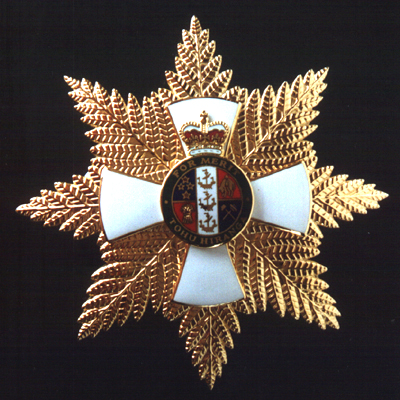
Commonwealth Day
The annual Commonwealth Day Service in Auckland will be held at Holy Trinity Cathedral, Parnell. The Service will be at 9.30 am, on Sunday the 2nd March.
Local members are urged to attend the service, to show their support for the ideals for which the Commonwealth, under the leadership of The Queen, stands. The Commonwealth Day Message from Her Majesty The Queen will be read.
Royal Diary
Prince of Wales promoted
To mark his 54th birthday The Prince of Wales has been promoted to Vice-Admiral in the Royal Navy, Lieutenant-General in the British Army and Air Marshal in the RAF.
The Prince of Wales served in the Royal Navy from 1971 to 1976. Promoted Lieutenant on 1st February 1973, he served on the frigate HMS Jupiter between January and August 1974 as Flight Deck Officer, Assistant Intelligence Officer, Officer of the Watch, Entertainment’s Officer, Communications Officer, and Divisional Officer. The ship was sent on an extended deployment to Singapore, Australia, New Zealand, and the USA. He also served on other ships, including the light cruiser HMS Norfolk and the frigate HMS Minerva, and qualified as a commando helicopter pilot and flew from the carrier HMS Hermes.
From 9th February to 15th December 1976 Prince Charles commanded the mine countermeasures vessel HMS Bronington, on North Sea mine-hunting duties.

After leaving the navy in late 1976, he was promoted to Commander. He was promoted to Captain on 14th November 1988, and to Group Captain in the Royal Air Force at the same time. The Prince of Wales is also an Elder Brother of the Corporation of Trinity House.
His Royal Highness the Prince of Wales holds the appointment of Air Commodore-in-Chief of the Royal New Zealand Air Force. He had received flying lessons from 1968, and served in the Royal Air Force in 1971, retiring with the rank of flight lieutenant.

In October 1975 he took instruction on the Andovers of The Queen’s Flight, and from then until 1995 he had regularly taken the controls of aircraft in the Flight when carrying out official visits.
He is no longer current on any aircraft type, since this requires regular flights or the passing of simulator tests every six months.
To mark his 50th birthday His Royal Highness The Prince of Wales was promoted to the rank of Rear Admiral in the Royal Navy, Major-General in the British Army, and Air Vice Marshal in the Royal Air Force, with effect from 14th November 1998.
Apart from his appointment as Air Commodore-in-Chief of the RNZAF, The Prince of Wales does not hold military rank in the New Zealand Defence Force.
League News
Annual Seminar
Following on the successful Golden Jubilee seminar last year, a seminar will be held at the International Seafarers’ Centre, 114 Quay Street, Auckland on Sunday the 18th May. The Annual General Meeting will also occur on that day. Further information will be given in the next edition of Monarchy New Zealand.
Speakers will give a range of presentations, with the theme this year being the coronation. If you are interested in contributing please contact the Editor. Members of the public are encouraged to attend. Please bring any items of royal interest for display.
Overseas News
Belgian and Japanese royal visits
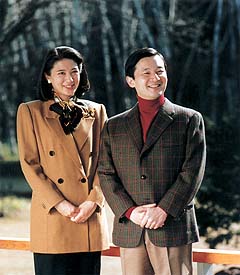
The Crown Prince and Princess of Japan visited New Zealand between 12th to 16th December.
This visit to New Zealand and Australia was the first official overseas visit for the Crown Prince and Princess in three years.
The visit included official activities in Wellington, civic receptions in Wellington, Christchurch and Auckland, and sightseeing in Te Anau and Milford Sound. The imperial couple chose to travel the same route as that undertaken by the Crown Prince’s parents, now the Emperor Akihito and Empress Michiko, who visited New Zealand in 1973.
The visit came in the 50th year of diplomatic relations between Japan and New Zealand. The anniversary was commemorated in December by the installation of a tomokanga Maori carved marae entranceway at the New Zealand Embassy in Japan.
The Crown Prince of Belgium, Prince Philippe, and Princess Mathilde, were also in New Zealand late last year, on a four-day visit.
The royal couple were accompanied by a 40-member business group, led by Federal Minister and Deputy Minister for Foreign Affairs, Annemie Neyts-Uyttebroeck.
In Auckland the royal couple’s programme included a Maori welcome, a welcome by the Belgian community, a business luncheon, and visits to the Ellerslie Flower Show, the America’s Cup village, a Te Kohanga Reo unit, and the Muka Gallery and studios.
In Wellington Prince Philippe and Princess Mathilde laid a wreath at the National War Memorial, and attended a ceremony of welcome, and an official dinner at Government House.
Meetings with ministers were scheduled, along with a Wellington Chamber of Commerce luncheon.
New Knights of the Thistle
On 30th November last year Her Majesty appointed two new Knights of the Thistle, the first since 2000. They were Lord Sutherland of Houndswood, MA FBA FKC FRSE, and Dr Eric Anderson, MA DLitt FRSE. Both are leading figures from the world of education, and the second also has strong royal connections.
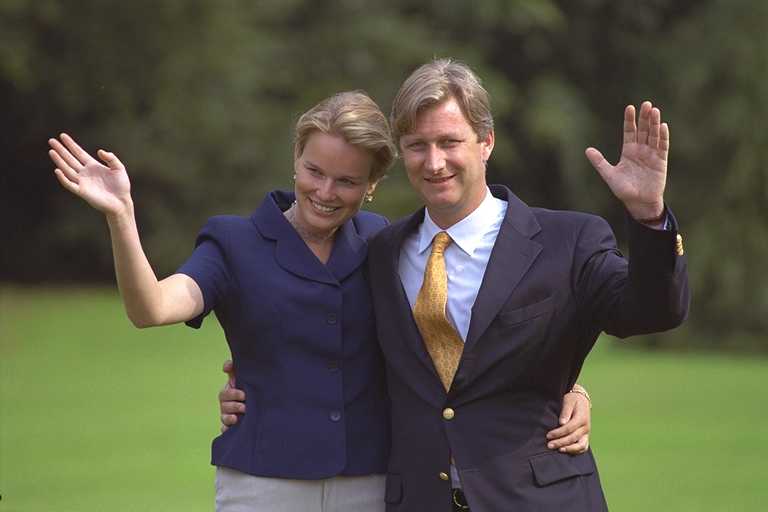
Lord Sutherland of Houndswood was Principal and Vice-Chancellor of the University of Edinburgh 1994-2002, and is currently President of the Royal Society of Edinburgh. He was formerly a Professor of History and Philosophy of Religion at King’s College, London, and later Vice-Chancellor of the University of London.
Dr Anderson has been Provost of Eton since 2000 (where he was Headmaster 1980-94), and was formerly Rector of Lincoln College, University of Oxford. Before heading Eton College he had been Headmaster of Abingdon School, and Shrewsbury School.
Sir Eric Anderson taught the Prince of Wales at Gordonstoun College, and also the young Tony Blair at Fettes College. He was Headmaster at Eton when Prince William arrived there. He is now Chairman of the National Heritage Memorial Fund, and of the King George VI and Queen Elizabeth Foundation of St Catharine’s, Cumberland Lodge, Windsor. Sir Eric is an expert on the writings of Sir Walter Scott, and a trustee of the Royal Collection Trust.
Time for a monarchist avant-garde?
An opinion piece by Mathew Norman
In my last article I addressed a number of matters surrounding the question of constitutional change in New Zealand. Having noted my concern with the quality of the debate and the monarchist response to the growing spectre of republicanism, I will now advance a proposal aimed at promoting a popular engagement with the New Zealand monarchy.
The title of this piece points to my sympathy for a monarchist defence which takes the lead, rather than existing solely as a response to republican assertions. Consistently on the back foot, we risk becoming a secondary player in the debate. To circumvent this I believe we need to identify areas of concern which might constitute a programme of reform. In so doing we identify monarchism as a positive rather than reactionary force, and would thus seize the opportunity to redirect debate – focusing on the central issues and not the inanities witnessed thus far.
The validity of monarchy within a modern, democratic and (supposedly) egalitarian society, is at the heart of much republican rhetoric. In voicing support for an institution with a history predating our country’s own, monarchists must be aware of the stigma that age carries in a society increasingly obsessed with novelty. An appeal to history (particularly when that history is ‘British’ and not specifically our own) is insufficient to stave off the criticisms of those who perceive age as a barrier to relevance. By characterising the monarchy as the colonial hangover par excellence of our supposed cultural malaise, the republicans are on the verge of discrediting the institution as a valid part of our living heritage.
We must admit that the monarchy embraces qualities and values which, though often venerable, are increasingly at odds with contemporary society. This is not to say, however, that these should then be discarded in the scramble for popular endorsement. But in maintaining an allegiance to things which transcend the vagaries of the age, the monarchy must also seek to justify and prove their merit. The public – highly politicised, media-savvy and critical (if not critically informed) – will not accept ‘yes’ as an answer when they want to know ‘why’. Allegations of sexism and religious exclusivity are not without circumstantial evidence. Therefore these issues may constitute the crux of a monarchist policy of redefinition.
The fact that primogeniture governs succession to the throne of New Zealand in the twenty-first century is totally unacceptable. There can be no defence for a legal prejudice which has outlived its purpose and meaning by many centuries. That it has not been changed is testimony to the inaction of the legislature. Rightly, it should have been dealt with in the Constitution Act 1986; however, the matter of the succession may have been beyond the scope of the initial process of ‘patriation’ of our national institutions.
But the need for change is now obvious and in light of the absolute legislative independence post-1986, Parliament must be encouraged to lead the way in succession reform. It is a paltry excuse to suggest that reform should be instigated by Westminster. As much is to deny our sovereignty. Instead, let us assert our constitutional independence (rattling a few republican myths in the process) and be in the vanguard of change. Let Westminster, Ottawa and Canberra follow our lead in rationalising succession rights.
Not least of these anomalies is the continuing injustice of legal sanction against Catholic succession – a loaded historical anachronism which perpetuates unnecessary and irrelevant divisions within our community. Pointless and divisive this indefensible situation serves only as grist to the republican mill.
Similarly, this assault on contradictions should address the place of religion within New Zealand’s monarchy. Whilst respecting faith and religious conviction, I am fundamentally opposed to any connection between church and state. Indeed, in light of the secular nature of our state, it seems positively outrageous that the Anglican Church has any form of claim on the monarchical institution. The Anglican hierarchy may make no such claim, but as much is immaterial. The perceived link between the impartial, unifying figure of the sovereign and an effective minority religious organisation (in a country where organised religion and god/s have been on the wane for more than thirty years) is the root of much misunderstanding and suspicion.
It is no longer credible to intone the titles of the Sovereign and include the words ‘Defender of the Faith.’ Whose faith? Which god? Intentionally or not it is exclusionary in its implications. Attempting to nullify the consequences of this with an appeal to the indeterminate nature of the phrase, and a ‘defender of the faiths’ principle, ignores the glaring inconsistency of a relationship between a secular government and a religious organisation. The time for change has come. In effecting such reform care must be taken not to question the validity of faith. What must be stressed is that reform is symptomatic of the monarchy as an organic institution, responding to the needs of an evolving society.
There is no reason why monarchists cannot bring pressure to bear on politicians in order to effect such reform. In championing a proactive programme I risk the ire of those who perceive the status quo as sacrosanct. It is my belief that such a reasoning is fatal for the very institution it purports to protect. Identifying the monarchy with reaction would delight our opponents, while serving to achieve nothing for our cause. In any case it is a view which is at odds with monarchical history.
The constitutional monarchy is not perfect – but it is the best constitutional formula devised to date. As a body the monarchy is constantly evolving, embracing change as a means of survival, true, but in the process serving the needs of the nation.
Rather than let this organic model of political organisation ossify, monarchists must engage with change. By emphasising the positive qualities of the monarchy as a body capable of reform we would challenge the republican assertions of irrelevance. Monarchism and the monarchy need an avant-garde. We cannot rest easy when we are doing nothing to promote the institution we are resolved to save.
Through a policy which would highlight change monarchists can bring the monarchy into the new millenium, rather than letting it languish in the old through a mere lack of will. As challenging and controversial as it may appear, such a policy is the means to a greater end: a future in which New Zealand’s monarchy continues to exist.
Mathew Norman
Royal Poetry
This poem was written in honour of the wedding of The Prince of Wales (later King Edward VII) to Princess Alexandra, daughter of King Christian IX of Denmark. The ceremony took place in Windsor one hundred and forty years ago, on the 10th March, 1863. Lord Tennyson, the Poet Laureate, had been invited, but missed it because his invitation arrived too late!
A Welcome to Alexandra!
Sea-Kings’ daughter from over the sea,
............................. Alexandra!
Saxon and Norman and Dane are we,
But all of us Danes in our welcome of thee,
............................. Alexandra!
Welcome her, thunders of fort and of fleet!
Welcome her, thundering cheer of the street!
Welcome her, all things youthful and sweet,
Scatter the blossom under her feet!
Break, happy land, into earlier flowers!
Make music, O bird, in the new-budded bowers!
Blazon your mottoes of blessing and prayer!
Welcome her, welcome her, all that is ours!
Warble, O bugle, and trumpet, blare!
Flags, flutter out upon turrets and towers!
Flames, on the windy headland flare!
Utter your jubilee, steeple and spire!
Clash, ye bells, in the merry March air!
Flash, ye cities, in rivers of fire!
Rush to the roof, sudden rocket, and higher
Melt into stars for the land’s desire!
Roll and rejoice, jubilant voice,
Roll as a ground-swell dash’d on the strand,
Roar as the sea when he welcomes the land,
And welcome her, welcome the land’s desire,
The sea-kings’ daughter as happy as fair,
Blissful bride of a blissful heir,
Bride of the heir of the kings of the sea -
O joy to the people and joy to the throne,
Come to us, love us and make us your own:
For Saxon or Dane or Norman we,
Teuton or Celt, or whatever we be,
We are each all Dane in our welcome of thee,
.............................. Alexandra!
Alfred, Lord Tennyson
Royal visits
The Queen Mother 1958
Queen Elizabeth The Queen Mother visited New Zealand for two weeks in February 1958 as part of a round-the-world tour. She was the first member of the Royal Family to embark on such a tour by aeroplane, previous travels on this scale having been by sea. It was her first visit to New Zealand since 1927.
Her Majesty arrived from Canada, and was received by the Prime Minister, the Rt Hon Walter Nash.
Events included a banquet in the Auckland War Memorial Museum hosted by the Right Worshipful Keith Buttle, Mayor of Auckland. Crowds throughout the visit were large, and there was some difficulty in restraining onlookers on a number of occasions.
A garden party in the grounds of Government House in Wellington was hosted by the recently appointed Governor-General, Viscount Cobham, GCMG TD.
The Queen Mother was in Christchurch 12th-14th February.
At the conclusion of the visit The Queen Mother travelled on to Australia. The 1958 royal tour was also included Hawaii, Fiji, Cocos Island, Mauritius, Uganda, and Malta.
Royal Residences past and present
Falkland Palace
Falkland Palace, in the royal burgh of Falkland, Fife, Scotland, was a regular royal residence from 1400 to 1603. The Royal Palace of Falkland was the country residence of the Stuart kings and queens when they hunted deer and wild boar in the Fife forests. Mary, Queen of Scots spent some of the happiest days of her often troubled life here.
The surviving parts of the Palace were built between 1501 and 1541 by Kings James IV and James V. They replaced earlier castle and palace buildings dating from the 12th century, traces of which can still be seen in the grounds.
The roofed South Range contains the Chapel Royal, and the East Range the King’s Bedchamber and The Queen’s Room, both restored by the National Trust for Scotland. The Keeper’s Apartments in the Gatehouse are also on public display. The palace contains fine portraits of the Stuart monarchs, and two sets of 17th-century tapestry hangings.

The present garden was designed and executed by Percy Cane between 1947 and 1952. It contains three herbaceous borders enclosing a wide lawn with many varieties of shrubs and trees. The original Royal Tennis court is the oldest in the United Kingdom still in use. It was built in 1539, shortly before that at Hampton Court Palace.
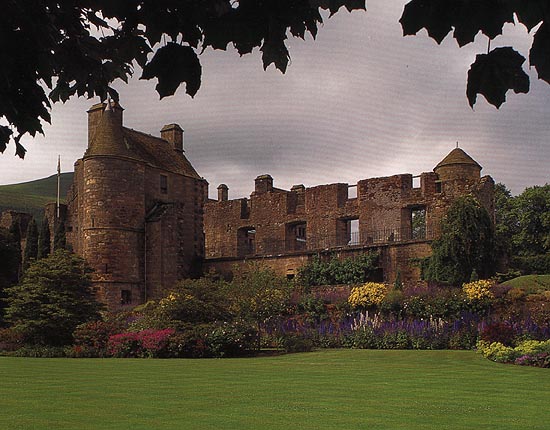
Recorded sacred music is now played hourly in the Chapel Royal. There are exhibitions at the Royal Tennis Court and in the Town Hall.
The hereditary Constable, Captain and Keeper of the Palace is Ninian Crichton-Stuart. His ancestor, John Crichton-Stuart, the 3rd Marquess of Bute, KT, was made Hereditary Keeper in 1887.
The Marquess of Bute completely restored the South Range and made it habitable again. There is no trace of the North Range surviving. The Crichton-Stuarts are descendants of the Royal Stuarts through King Robert III’s natural son Sir John Stuart, Sheriff of Bute.
Since 1952 the National Trust for Scotland has been Heritable Deputy Keeper, and so responsible to the Keeper for the upkeep of the fabric of the ancient palace.
Book Review
Fifty years the queen: a tribute to the Queen on her golden jubilee: an illustrated biography, by Arthur Bousfield & Garry Toffoli (Toronto & Oxford: Dundurn Press 2002) pp.232 C$25.
reviewed by L R B Mann
The Canadian Royal Heritage Trust and Monarchy Canada magazine were instrumental in this jubilee tribute, and the book is straightforwardly monarchist, declaring near the start "God has established a unity between His creations in this world. Only a king or queen, the product of Man’s history and God’s anointing, can presume to stand before the Canadian land as an equal to personify the Canadian state and lead the Canadian people."
As this quote already suggests, the perspective is unabashedly Canadian; would that such a good book had been produced from a New Zealand perspective.
Pictures abound on almost every page, many in colour. Some are of inferior quality, owing no doubt to difficulties in reproduction; but taken as a whole, they are a very good collection. There is even a photo of the remarkable Treetops Hotel, with an elderly armed civilian guard, "where Princess Elizabeth became Queen Elizabeth II".
The biography begins its detailed account with the 1957 Canadian visit of HM. Ceremonial clothing and jewellery are described as befits them; but also we learn that "a 350-pound sturgeon had been caught off Nova Scotia – the first in ten years. By ancient law, all sturgeons caught in the waters of the Queen’s realms belong to the Sovereign, so the fish was packed in ice and flown to Rideau Hall by the Royal Canadian Air Force, where, that evening, it was presented to Her Majesty." HM’s reaction is not recorded.
Those celebrations joyfully described, the authors settle down to a biography. The auspicious addition of 1926 to "the most famous family in the world" is illustrated with pictures rarely seen; the world’s prettiest girl is shown in various contexts; the frontispiece of the book is of this ‘second subaltern’ with her army ambulance which she trained to drive and maintain. This phase of experience should remind us that heirs to our throne have normally been educated partly in the armed forces, a very wise tradition. Would that HM ministers today had any comparable experience or knowledge of military matters.
The historical context of the monarchy is shown to some extent, e.g. the painting of Queen Victoria receiving Sir John MacDonald on the eve of confederation, 1867, and stretching back to the presentation of Communion silverware by Queen Anne to the Mohawks. New Zealand features in a minor way e.g. the 1954 opening of Parliament. "At a huge Maori gathering at Waitangi on 2 January, the Queen, wearing a ceremonial Kiwi feather cloak, urged her Maori subjects to hold fast to their own language and culture" – yet to the extent that they have failed to live up to that challenge, today others are blamed.
This is an inspiring book, a fine work by good monarchists. The life of impeccable service is delightfully described.
